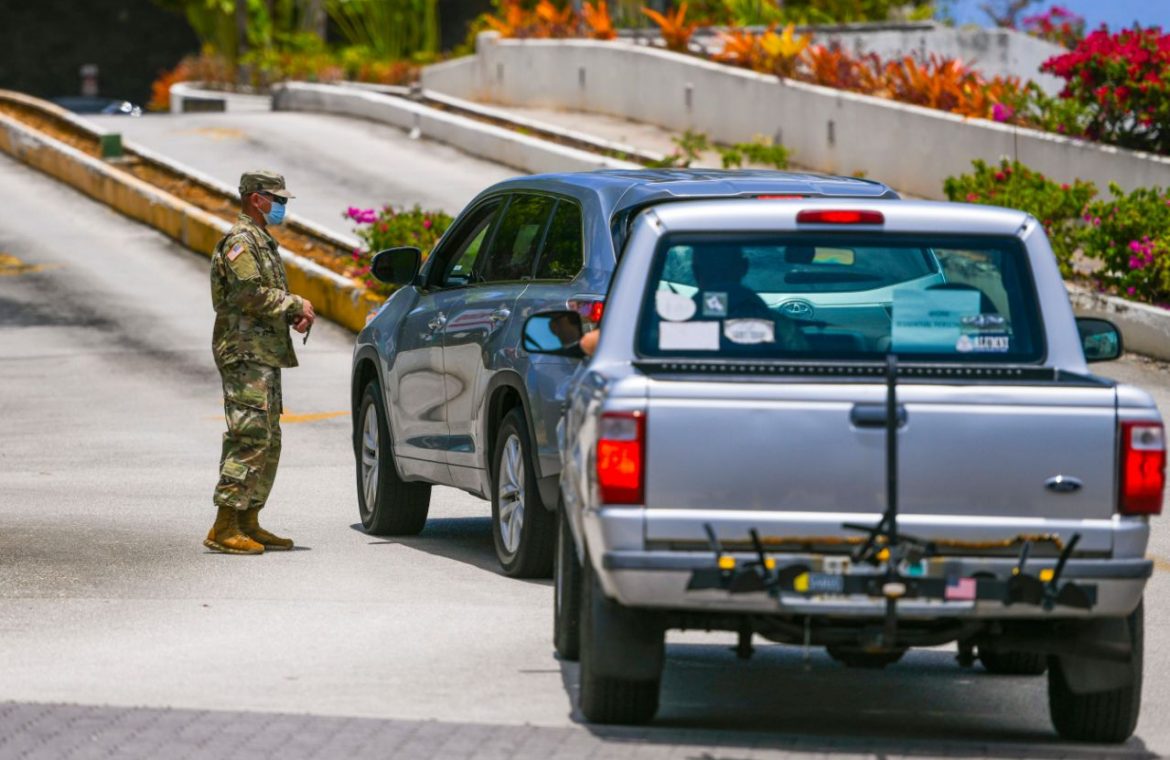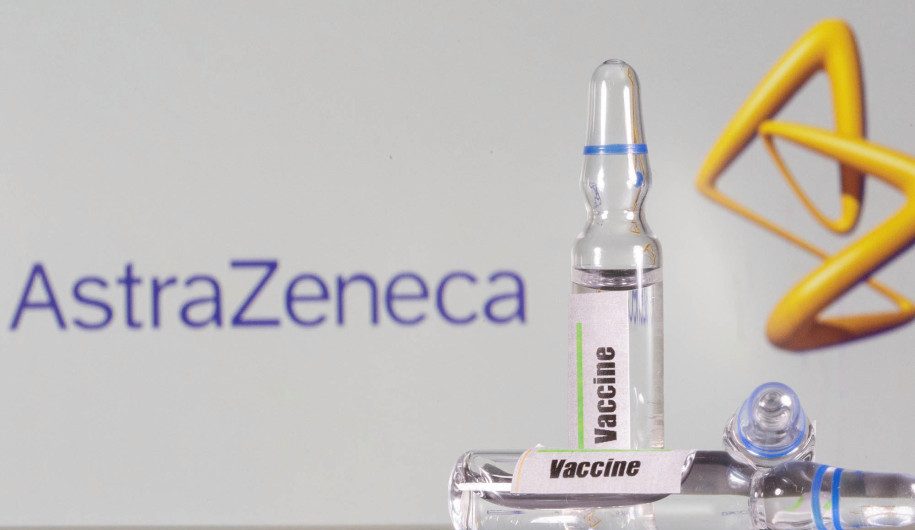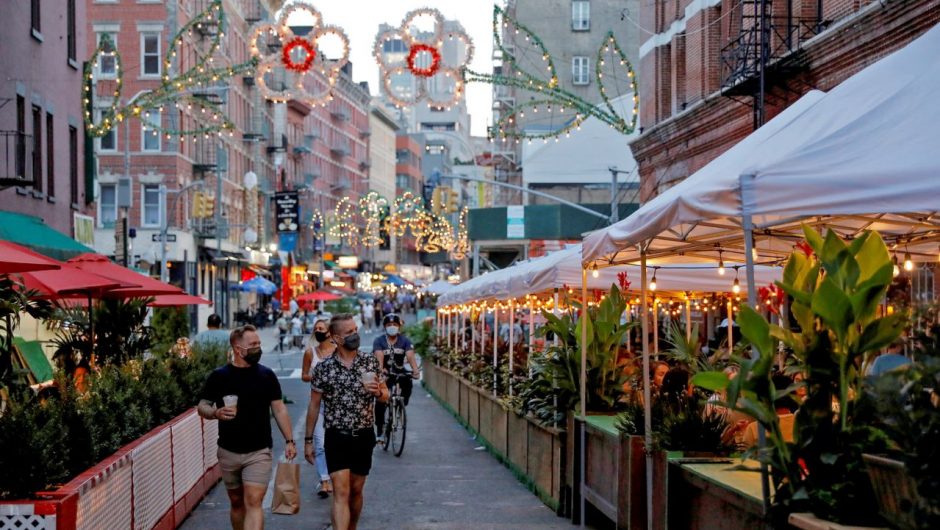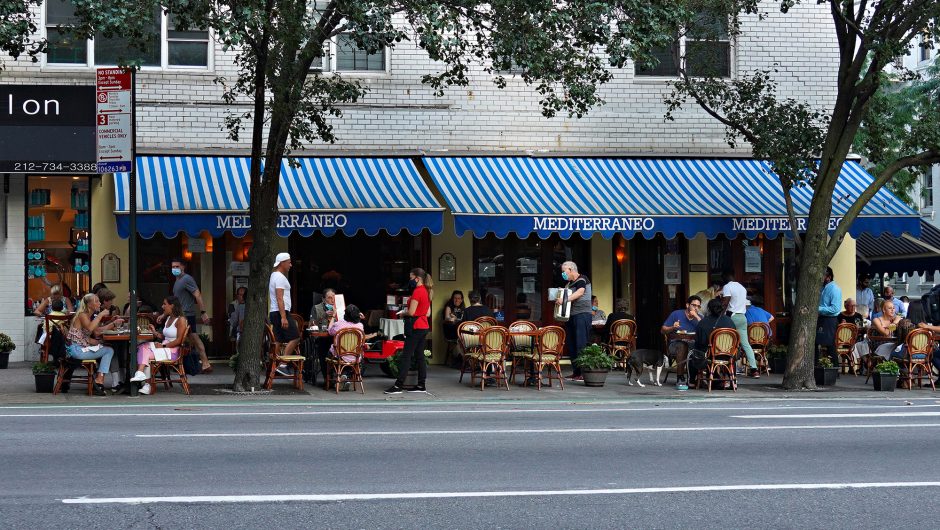The claim: U.S. military has approved COVID-19 quarantine ‘camps’ that will access personal information and be monitored by militarized CDC police
Early in the coronavirus pandemic, the Department of Defense’s approval of military facilities for quarantine use was theorized to be much more than a public health effort.
“A coming digital 5G biometric tracking surveillance CHECKPOINT service that accesses your entire data from financial status, tax history, social credit score, social media ranking, watch history, sexual preference, political views, will be monitored by armed militarized CDC police will determine who is desirable for society and who goes to camp,” an Instagram post by user liftingtheveilofficial claims.
The post, from early in the pandemic but which remained viral well into late spring, also incorporates copied text from a February Daily Mail UK article that claims the Pentagon has approved “11 quarantine camps on military bases near major airports across the US in anticipation of an influx of American citizens returning from China in need of monitoring for the deadly coronavirus that is now being called COVID-19.”
Liftingtheveiloffical told USA TODAY that his claim was “mostly my own personal sarcastic speculation, and (I’m) being a bit hyperbolic as well.” But, he later asserted his speculations were indeed substantiated and made allusions to Bill Gates, various world organizations and secret societies.
Fact check: Federal agents in Portland are not mercenaries provided by Erik Prince
The early origins of quarantining the sick
The concept of quarantine is mentioned in the biblical book of Leviticus – estimated to have been written between the fifth and eighth centuries B.C. – where those afflicted with leprosy are asked to live separately from the healthy. In Chapter 5 of the Book of Numbers, individuals with, suspected of having or exposed to leprosy are advised to be “put out of camp” in order to keep the general living area clean and disease-free.
Story continues
Outside of religious texts, the Byzantine emperor Justinian, in 549 A.D, enacted laws to prevent entrance to travelers from plague-afflicted regions. During the ecumenical Council of Lyons in 583 A.D., bishops were urged to assist lepers (those suffering from leprosy) within their own cities but cautioned against allowing such individuals to wander about freely.
The large-scale practice of quarantine as a public health strategy emerged in the Middle Ages. This time — between the fifth and 15th centuries A.D. — was notorious for plagues caused by the bacteria Yersinia pestis, occurring regularly almost every 40-50 years. Towns and villages throughout Europe would isolate sick individuals and forbid outsiders from infected regions or countries from stepping foot in their communities. Some historical documentation from the seventh century suggests armed guards were used to forcibly stop travelers when the plague hit southeastern France.
Fact check: Coronavirus deaths surpass combined battle fatalities in several US wars
More formative policy would take shape after 1348. It was around this time that the deadliest pandemic in recorded in human history, the Black Death, overtook Europe, the Middle East and the rest of the world. Also caused by Yersinia pestis and believed to have originated in the Qinghai Plateau of central Asia (now modern-day Tibet), this plague would strike every 10-20 years over the next four centuries. It is estimated 50%-60% of Europe’s population died as a result.
The Black Death compelled European cities, especially those with oft-visited seaports like Venice, Italy, or Dubrovnik, Croatia, to institute a quarantine system involving a council of three who oversaw the responsibility and power of detaining individuals and entire ships. The duration of isolation typically observed by ships coming from infected, or suspected infected, seaports was 30 days; this became 40 days for land travelers, and is the source of the word “quarantine,” from the Italian “quaranta giorni” meaning 40 days (this prescribed duration itself appears to be derived from the ancient Greek physician Hippocrates).
Entering legislation
While the Black Death subsided in the early 17th century, the emergence of other transmissible diseases like smallpox, cholera and yellow fever would lay the framework for uniform quarantine policies.
In 1710, England passed the Quarantine Act, mandating a death sentence for anyone who refused to comply with the required 40-day quarantine. Similarly, in the United States, Massachusetts enacted a statute in 1797 that invested the state with the power to mandate quarantine.
Fact check: Document claiming to show CDC guidance about various types of masks is a fake
Quarantine edicts in early America largely varied and were up to local authorities. It was not until a yellow fever epidemic in New Orleans in 1877 that the National Quarantine Act was passed in April 1878. This egislation formalized measures against the introduction and spread of contagious, infectious diseases, and created the National Board of Health, a short-lived institution charged with standardizing quarantine across the nation.
Nearly 70 years later, in 1944, the Public Health Service Act was passed granting the U.S. Public Health Service (now the Commissioned Corps of the U.S. Public Health Service) authorization to “prevent the introduction of epidemic diseases into this country from abroad and to prevent interstate spread of communicable disease.” The quarantine program inherent in this responsibility was later transferred to the agency now known as the Centers for Disease Control and Prevention in 1967.
Quarantine stations
Just as quarantine took shape centuries ago, so did the concept of a specific building for the quarantined. The first predecessor of a quarantine station was constructed outside Venice on the island of Santa Maria di Nazareth in 1423. Called a lazaretto after the biblical figure Lazarus, these plague hospitals popped up all over Europe and served as “centers of habitation to restrict the spread of disease but close enough to transport the sick,” writes Dr. Eugenia Tognotti, a professor of history of medicine and human sciences at the University of Sassari in Italy.
In the United States, the New York City Council constructed a maritime quarantine station on Bedloe’s Island, one of a group of islands at the mouth of the Hudson River, in 1738. In 1793, during Philadelphia’s yellow fever epidemic, a 10-acre quarantine station was built south of the city along the Delaware River.
After Congress approved “an act for the relief of sick and disabled seamen” in 1798, the Marine Hospital Service built and supervised a series of hospitals in the nation’s seaports, which included quarantining sailors suspected of carrying disease. These hospitals would later play a huge role in screening and quarantining new immigrants arriving to the United States at the turn of the 20th century. Around the same time, tuberculosis became a major concern, and institutions known as sanatoria or preventoria were established to quarantine and treat affected individuals.
Fact check: Black nurses helped save Philadelphia during a 1793 epidemic
By the first half of the 20th century, quarantine stations were widespread. The U.S. Public Health Service created and maintained more than 110 quarantine stations at air, sea and land ports. But as the perceived threat of infectious disease diminished (thanks to advances in modern medicine such as vaccination), the number of quarantine stations fell: There were 55 when the CDC was given responsibility for quarantines in 1967, shrinking to just seven by 1995.
Outbreaks of new infectious diseases, such as SARS and Ebola, and threats of bioterrorism renewed interest in quarantine stations. An eighth station opened in Atlanta ahead of the 1996 Olympic Games, and increased to 20 more by mid-2007. Currently, there are quarantine stations at 20 ports of entry and land-border crossings where international travelers arrive, according to the CDC.
In response to the coronavirus outbreak, more quarantine sites were made available.
In February, the Department of Defense approved a request from the Department of Health and Human Services, which oversees the CDC, for possible use of military facilities to quarantine Americans returning from overseas, particularly evacuees from Wuhan, China, and passengers of the Grand Princess cruise ship.
Drivers are stopped by a Guam National Guard soldier at a security checkpoint posted at the driveway entrance to the Pacific Star Resort & Spa in Tumon on Thursday, April 9, 2020. Hotels on island that normally cater to the island’s tourism industry, were used to isolate some of the 5,000 military personnel who serve aboard the U.S.S. Theodore Roosevelt.
While 11 bases were approved at the time of the Daily Mail article cited in the Instagram post, this was later expanded to 15. But it’s important to note that these quarantine sites were temporary – some were not even used – and not official CDC quarantine stations. Hundreds of Americans were released in February after observing the 14-day quarantine.
Quarantine and individual rights
At present, most isolation and quarantine measures are still split among federal and state authorities and roughly 2,800 local public health departments, according to STAT News. The CDC does retain the authority to “detain, medically examine, and release persons arriving into the United States and traveling between states who are suspected of carrying these communicable diseases” but forced isolation or quarantine is typically undertaken by individual states, not by federal agencies. Isolation or quarantine in a CDC station is generally applied to travelers arriving from abroad.
While U.S. Customs and Border Protection, the U.S. Coast Guard and other law enforcement agencies may help in enforcing federal quarantine orders, the CDC is itself not militarized. Medical and public health officers at quarantine stations are typically involved in responding to reports of illness, distributing medication, emergency preparedness, alerting local health authorities, inspecting cargo or personal items and other related tasks, according to the CDC. There is no evidence to suggest information pertaining to financial status, tax history, social credit score, social media ranking, watch history, sexual preference or political views is or will be accessed at quarantine stations.
Fact check: 5G technology is not linked to coronavirus
Our ruling: Partly false
We rate the claim that the U.S. military has approved COVID-19 quarantine “camps” that will access personal information and be monitored by militarized CDC police as PARTLY FALSE because some of it is not supported by our research. While it is true that 11 military facilities were approved as quarantine bases, these sites were meant to be temporary and are not true quarantine stations. The federal government has some authority to institute a large-scale quarantine, but quarantine measures are still the discretion of state and local health departments. Law enforcement agencies may help enforce federal quarantine orders, but the CDC itself is not militarized. There is no evidence to suggest personal information is or will be accessed at quarantine stations.
Our fact-check sources:
Clinical Infectious Diseases, “The Origin of Quarantine.”
International Encyclopedia of Public Health, “Quarantine Through History.”
International Social Science Review, “Medieval Leprosy Reconsidered.”
Harvard Health, “Plague (Yersinia Pestis).”
Live Science, “What Was the Black Death?”
Mayo Clinic, “Smallpox.”
World Health Organization, “Cholera.”
World Health Organization, “Yellow Fever.”
Indiana University School of Public Health, “A brief history of the Public Health Service.”
Public Health Reports, “The National Board of Health: 1879-1883.”
Public Health Reports, “Public Health Service Act, 1944.”
Emerging Infectious Disease, “Lessons from the History of Quarantine, from Plague to Influenza A.”
Public Health Reports, “A New Paradigm for Quarantine and Public Health Activities at Land Borders: Opportunities and Challenges.”
Library of Congress, “An Act for the relief of sick and disabled Seamen.”
CDC, “History of Quarantine.”
CDC, “Legal Authorities for Isolation and Quarantine.”
CDC, “U.S. Quarantine Stations.”
CDC, “CDC Organization.”
Military Times, “Pentagon adds to list of bases that can house passengers quarantined for coronavirus.”
Business Insider, “229 US citizens were released from coronavirus quarantine this week. Here’s where the 15 military-approved quarantine camps are.”
NPR, “Coronavirus Update: 346 Americans Emerge From Quarantine At California Military Bases.”
Snopes, “CDC Announces Plan to Detain Americans for Forced Vaccinations?”
STAT News, “Explaining a mass quarantine: What does it mean to ‘shelter in place’? And who has the power to call for it?”
Thank you for supporting our journalism. You can subscribe to our print edition, ad-free app or electronic newspaper replica here.
Our fact check work is supported in part by a grant from Facebook.
This article originally appeared on USA TODAY: Fact check: Quarantine sites are real; COVID-19 claim stretches truth








